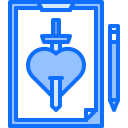Sleep and Safety: The Everyday Preventive Duo
Place babies on their backs on a firm, flat surface with fitted sheet only—no pillows, blankets, or bumpers. Room-share without bed-sharing, avoid overheating, and practice supervised tummy time when awake. Do a five-minute crib check tonight and share the change that surprised you most.
Sleep and Safety: The Everyday Preventive Duo
Anchor furniture, add stair gates, lock cabinets, cover outlets, and keep small objects and batteries out of reach. Inspect toys regularly and use sun protection outdoors. Walk through one room daily with fresh eyes, then post your favorite childproofing hack for new families.






